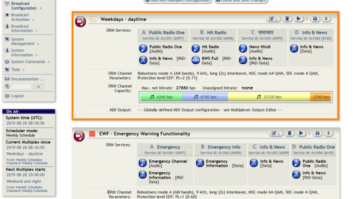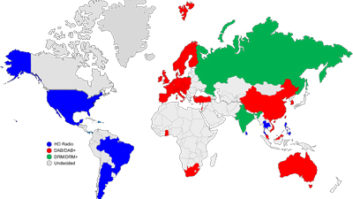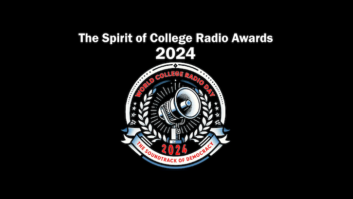In a bid to ensure consistent and reliable performance in its version of consumer digital radios, the Digital Radio Mondiale (DRM) Consortium has released its DRM Consumer Radio Receiver Functionality Recommendation. This document provides consumer radio manufacturers with a standardized approach to manufacturing receivers capable of receiving DRM radio broadcasts. The recommendation covers DRM digital radio in the LW, MW, SW and VHF bands (Band I, II and III), plus analog AM and FM.
DRM is the international ITU-R standard for digital radio in all radio broadcasting bands, which is being promoted and maintained by the not-for-profit DRM Consortium. The standard is being positioned as the digital successor technology to analog AM and FM transmissions; a position also being claimed by DAB+ and HD Radio. DRM’s apparent advantage over these two formats to date is its deployment over shortwave radio networks with national/international reach, such as All India Radio’s DRM network. According to the DRM Consortium’s website, China, Indonesia, Pakistan and South Africa are among the other nations interested in deploying DRM in one form or another.
According to a DRM Consortium news release issued on Feb. 6, 2025, “As DRM is being increasingly rolled out, adopted and demonstrated globally such a document is necessary to offer a guide to receiver manufacturers, but also broadcasters and regulators, so that consumers get a common and consistent DRM digital radio experience.”
The release noted that this document applies “to all types of consumer-targeting DRM radio receivers, with detailed application-specific requirements for automotive receivers, personal mobile devices (such as mobile, feature, and smart phones or tablets incorporating built-in radio receiver functionality for terrestrial broadcast radio) and general-purpose receivers (all types of stand-alone receivers, including home and desktop radios).”
DRM Chairman Ruxandra Obreja is quoted, welcoming the release of the DRM Consumer Radio Receiver Recommendation as “a useful tool for any manufacturer, broadcaster and regulator. The guide will allow manufacturers the freedom and flexibility to produce receivers of variable degree of complexity that offer a consistently good experience for the listener.”
She continued: “It also allows for receivers to incorporate applications and services (like distance learning, emergency warning) that fully meet the needs of many economically and socially diverse communities across the continents. The guide will become thus an essential tool in the DRM eco-system that will bring receivers in numbers, with the adequate functionality, to the countries embracing the DRM standard and their millions of listeners.”





